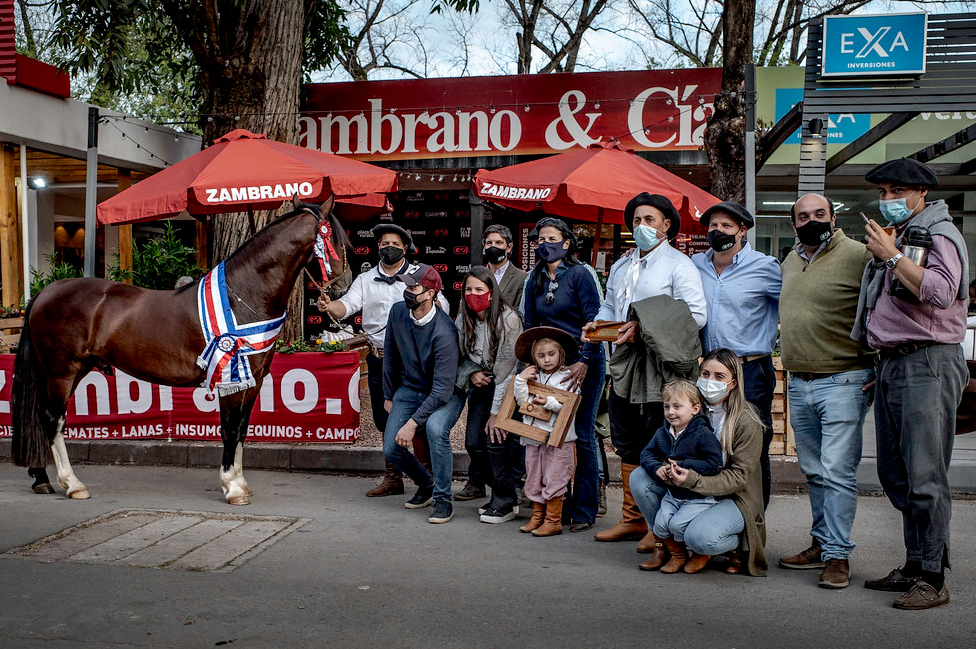America is the pandemic’s world epicenter but there is one exception: Uruguay. While most countries in the region count the deaths in thousands, in Uruguay the number of deaths from Covid-19 is less than 50. In August, Dialogo a Fondo, a blog of the International Monetary Fund (IMF), published a text explaining the Uruguayan reality. Institutional solidity, social cohesion and a strengthened welfare state during the last decades, added to an exemplary management by the government, would be the causes of its success. However, the arguments presented in this and other articles, as well as by the government and the opposition, who dispute recognition, do not explain the reality of the country. The fundamental causes of the miracle may have little to do with Charrúa merit.
The government “took the threat very seriously” and acted with “speed”, he begins by explaining in the text. When the first four cases were confirmed on March 13, Lacalle Pou announced a state of health emergency and decreed the partial closure of borders and the cancellation of public events. According to the COVID-19 observatory of ECLAC, all South American countries closed their borders -totally or partially- between March 14 and 18 and suspended massive events between March 12 and 19. Uruguay was not the first in any of those cases.
In Uruguay, compulsory confinement was never decreed and citizen responsibility was invoked. This is another cause highlighted by authorities in a Washington Post article. From healthcare’s point of view, this measure is less strict than the mandatory quarantines applied in neighboring countries, so in the best of cases the measure did not aggravate the spread of the virus.
“the drop in mobility was much greater” in Argentina.
In this line, the Uruguayan political scientist Daniel Chasqueti highlighted in an article of the magazine PEX that “the behavior of the citizens is one of the key pieces to understand the successful Uruguayan puzzle”. According to data from Google Uruguay, attendance at recreational activities in the second half of March was reduced by 75%. But according to an article in La Diaria, during the same days “the drop in mobility was much greater” in Argentina.
In the article Coronavirus in Uruguay: the unique and successful strategy…, the BBC considers the scientific advisory group appointed by the president a distinctive element. But leaving aside populist governments such as Bolsonaro, López Obrador or Trump, who to some extent prioritized cushioning the economic effects in order to put their personal agendas first, the vast majority of governments turned to their scientific communities to define their strategies.
The national development of diagnostic tests has also been highlighted. At the end of March, researchers from the Pasteur Institute and the University of the Republic designed a kit that allowed improving testing. Similar achievements, however, were reached in Argentina by scientists from Conicet, as well as by Chilean scientists from the University of Talca and Brazilians from the Albert Einstein Hospital in Israel.
Chile and Costa Rica, however, have proportionally tested much more.
The number of tests is another key factor. According to data from Our world in Data, the proportion in Uruguay, although low compared to developed countries, is high in the Latin American context. Chile and Costa Rica, however, have proportionally tested much more. As of April 1, Uruguay was testing just over one in every 1000 people per day, while Chile was testing almost two and Costa Rica 1.7. Four months later those differences had widened.
According to Globo, the health system has been a key factor in explaining Uruguay’s exceptionality. “Our universal health system is decisive for the results we register,” said Uruguayan Health Minister Daniel Salinas. However, this does not seem to have been so essential since until September 21, only 43 patients had undergone intensive care and some 120 had undergone intermediate care.
Perhaps the most effective measure has been epidemiological surveillance. According to Deutsche Welle, “in the first three months of the pandemic there were never more than five clusters of spread. however , the number of imported cases and their timing in the evolution of the pandemic cannot be ignored. On March 13, Uruguay became the last South American country to record an infection, and from the next day and for the next four days all South American countries closed their borders completely or partially. By then, Brazil, Ecuador or Venezuela had identified their first cases two weeks earlier.
The arguments presented in these articles describe the country’s well-known qualities and the correct actions of the Uruguayan authorities. But these reasons alone do not explain the country’s unprecedented situation.
Geographical isolation has been key to containing the pandemic.
Geographical isolation has been key to containing the pandemic. According to a BBC article, the only ten countries in the world without confirmed cases at the end of August were Pacific islands. More representative is the case of New Zealand, an island with a population and density similar to that of Uruguay, which, according to Worldometer data, has similar numbers of both infections and fatalities.
Uruguay is not an island. However, while Argentina is separated by the Rio de la Plata and the Uruguay River, which is crossed by only three bridges, Brazil is separated by 1068km of border that connects it to a region with a very low population density. In practice, this makes Uruguay geographically isolated from areas with high population density.
In addition, Uruguay is not on the way anywhere. This explains, along with its size, the low airlines connectivity and the fact that it was the last South American country to register its first case. According to the Global Connectivity Ranking, in 2016, São Paulo, Lima, Bogotá, Buenos Aires, Santiago, Rio and Caracas ranked between 128th and 25th among the cities with the greatest airlines connectivity in the world. Quito ranked 384th and Montevideo 525th, similar to Santa Cruz and Asunción.
Uruguay also had, until recently, a similar situation to that of Paraguay with respect to the pandemic. By the end of July the neighboring country, one of the most fragile countries in the region, had only 40 deaths. However, the Triple Frontier, a heavily populated area that extends into Brazil and Argentina, ended up taking its toll and Ciudad del Este became the source of Paraguay’s disruption.
Despite the low population density in the border areas with Brazil, several of the main foci in Uruguay have emerged there. However, for the time being the country has managed to keep the pandemic under control.
Uruguay’s first major challenge is yet to come. For the coming summer season, one of the countries in the region with most interntional tourists in relation to its population, it will have no choice but to choose. Either it maintains its isolation and sacrifices tourism, which would imply an enormous economic and social cost. Or it opens up to the massive arrival of foreigners, which could put an end to the headlines that make the country so proud.
*Translation from Spanish by Emmanuel Guerisoli
Photo of jikatu at Foter.com / CC BY-SA













